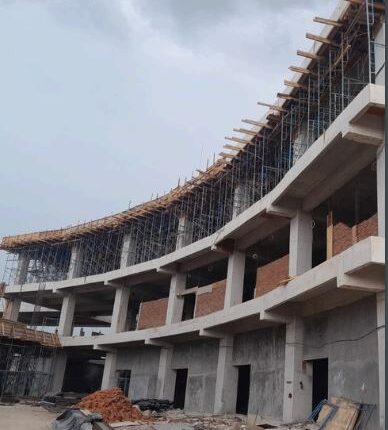In Line with President Jokowi’s Vision, AMANAH Building Construction Uses Integrated Technology System
By: Nabila Khairunissa )*
In the modern era, the application of advanced technology in the agricultural sector is becoming increasingly important to achieve efficiency, productivity, and sustainability. The new building of Aneuk Muda Aceh Unggul Hebat (AMANAH), the construction of which was initiated by the State Intelligence Agency (BIN) according to President Jokowi’s direction, is one example of the application of integrated technology that supports sustainable cultivation by combining renewable energy innovation, automation, and smart farming .
Through these innovations, AMANAH not only seeks to improve operational efficiency but also contributes to environmental preservation. One of the main technologies used is a wind turbine system that generates energy from wind potential in the building area. In addition, AMANAH has also adopted smart farming technology that allows for resource optimization and reduction of agricultural risks.
The wind turbine installed in the new AMANAH building is one of the most prominent innovations in the application of renewable energy. One of the main mentors at AMANAH, Reza, explained that this wind turbine utilizes the potential of the wind around the building to produce electrical energy that is used to drive important systems in cultivation such as biofloc and green houses. With this technology, wind energy is converted into an efficient source of electricity, reducing dependence on conventional energy sources that are more expensive and have a negative impact on the environment.
In addition to helping support operations, this wind turbine has significant benefits in terms of cost efficiency and carbon emission reduction. By using renewable energy from wind turbines, AMANAH is able to significantly reduce monthly electricity costs, thereby lightening the operational burden. Moreover, this wind turbine also contributes to reducing CO2 emissions by up to 3 tons per year, making it one of the real solutions in climate change mitigation efforts. Reza emphasized that the existence of this wind turbine is very important to help AMANAH carry out its mission in creating an environmentally friendly and sustainable cultivation system.
In addition to being applied to internal building needs, wind turbines at AMANAH also have the potential to be adopted by the wider community. AMANAH plans to further develop this wind turbine so that it can be used by communities in various regions, especially in areas that have large wind potential but have not been utilized properly. If this system has proven effective and has been successfully developed into a viable example, AMANAH will introduce this wind turbine as a renewable energy solution that can help communities reduce their dependence on fossil fuels.
Reza said that the success of this project will open up great opportunities for people in rural areas to gain access to cheap and sustainable renewable energy. With affordable and easy-to-operate wind turbines , people can benefit from lower energy costs while contributing to preserving the environment.
In addition to wind turbine innovation , AMANAH also adopts smart farming technology as part of an effort to increase efficiency in cultivation. With this technology, farmers involved in the AMANAH program are taught to utilize data and automation to optimize the use of resources. Smart farming allows for more efficient agricultural management with the help of technology, so that the risk of losses due to unpredictable weather factors can be minimized.
A farmer and mentor in the AMANAH smart farming program, Aby Kandar, strongly supports the application of technology in modern agriculture. According to Kandar, technology is the key to helping young farmers adapt to changing times and increase their production.
The successful implementation of wind turbines and smart farming technology in the AMANAH New Building also has a big impact on the young generation of Aceh. Reza expressed his pride as an Acehnese child who has succeeded in developing a wind turbine system , which not only supports energy sustainability in AMANAH, but also inspires local youth to get involved in technology and renewable energy.
With projects such as wind turbines and smart farming technology , AMANAH creates space for the creativity of Aceh’s youth to develop in technologies that may have previously been untouched by local communities. The project is expected to pave the way for further innovation and development in the energy and agriculture sectors, while also providing opportunities for the younger generation to contribute to building a greener and more sustainable future.
The implementation of integrated technology systems in the AMANAH New Building, which includes wind turbines and smart farming , is evidence of how technological innovation can support sustainable cultivation and energy efficiency. On the other hand, smart farming technology implemented by AMANAH allows farmers to increase productivity by using data and automation to optimize resources.
The impact of this innovation is not only limited to operational and environmental efficiency, but also provides broader benefits to the community, especially the younger generation of Aceh. Through support from the Government and AMANAH, young people in Aceh are encouraged to innovate and work in the field of technology and renewable energy, making AMANAH a pioneer in developing local creativity in the agricultural and sustainable energy sectors.
)* Aceh Millennial Farmers
